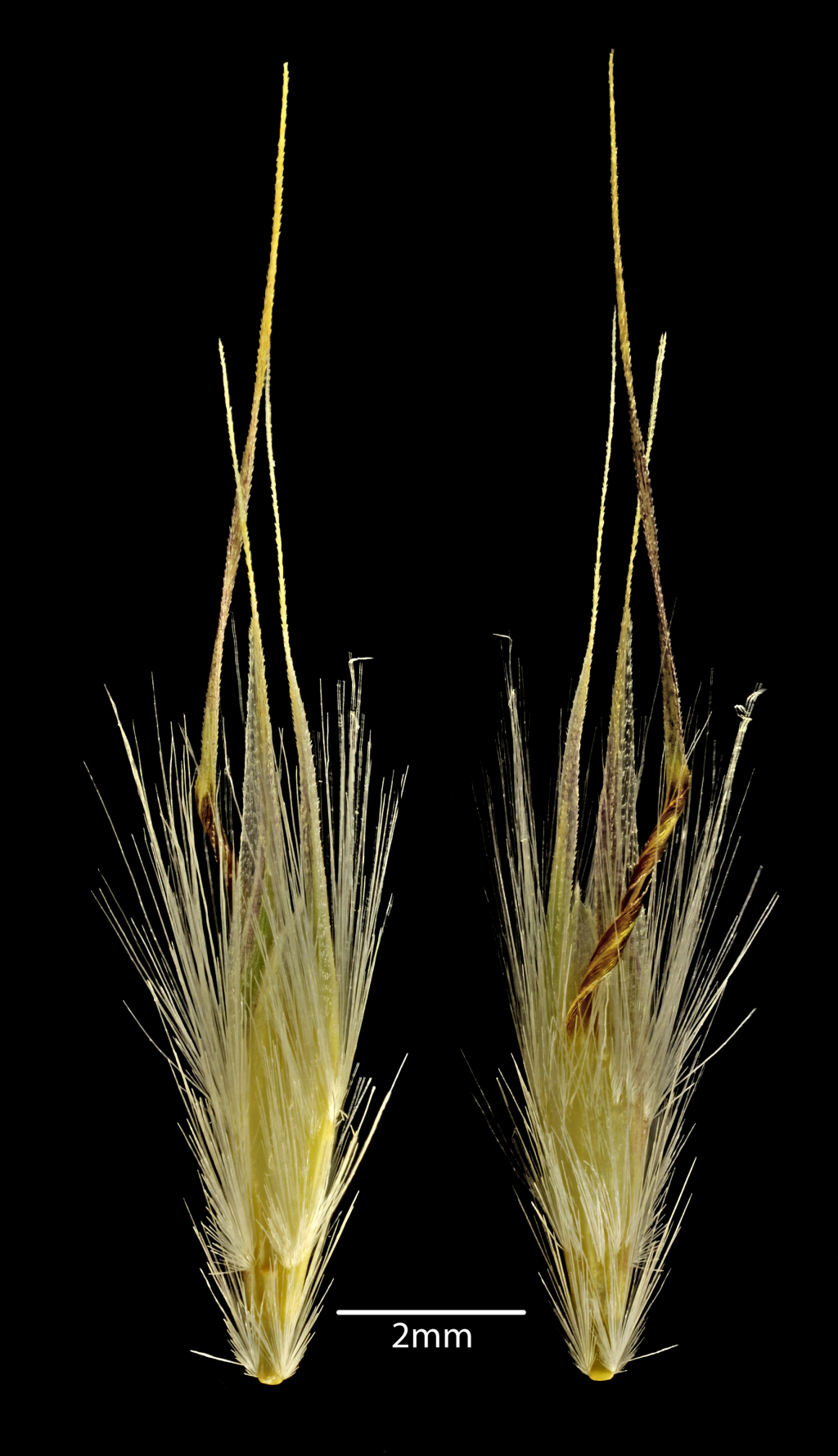Rytidosperma oreophilum
H.P.Linder & N.G.WalshCompact tufted perennial. Culms to 0.5 m high. Leaves glabrous to sparsely pilose; blade channelled to folded, to 12 cm long and 3.5 mm wide when flattened, rather stiff and thick-textured. Panicle narrowly ovate to linear, 2–7 cm long. spikelets 4–6-flowered; glumes subequal, acute, 12–18 mm long, usually distinctly purplish; lemma 2.5–4 mm long, firm, shining with 2 complete rows of hairs, frequently with a few scattered hairs between the rows, the lower row 1.2–2 mm above the callus tuft, and almost reaching the upper row or overlapping it, hairs of the upper row terminating just below to just above the twisted part of the central awn; lateral lobes erect or slightly spreading, 7–11 mm long, slender and evenly tapered, the setiform part to 3.5 mm, shorter than the flat portion, sometimes a minute auricle present at the base of the setiform part; central awn exceeding lateral lobes by 1–4 mm; palea obovate, exceeding sinus by 0.5–1.5 mm, glabrous between the keels. Flowers Jan.–Feb.(–Mar.).
GGr, VAlp. Also NSW, ACT, Tas. Locally common in (usually) rocky areas mostly above c. 1300 m in the eastern ranges, but with western outliers in the Grampians (e.g. Major Mitchell Plateau).
Vegetatively resembling Rytidosperma alpicola and often occurring in similarly rocky sites, but differing in the much shorter and broader palea. Lemmas similar to both R. erianthum and R. tenuius, but from the first distinguished by the relatively short setiform part of the lateral lobes, the absence of crescentic swellings below the hair tufts, and the frequent occurrence of scattered hairs between the rows. From R. tenuius it differs in the more compact inflorescence, the shining lemma surface and the relatively broader paleas that are glabrous between the keels.
 Spinning
Spinning
